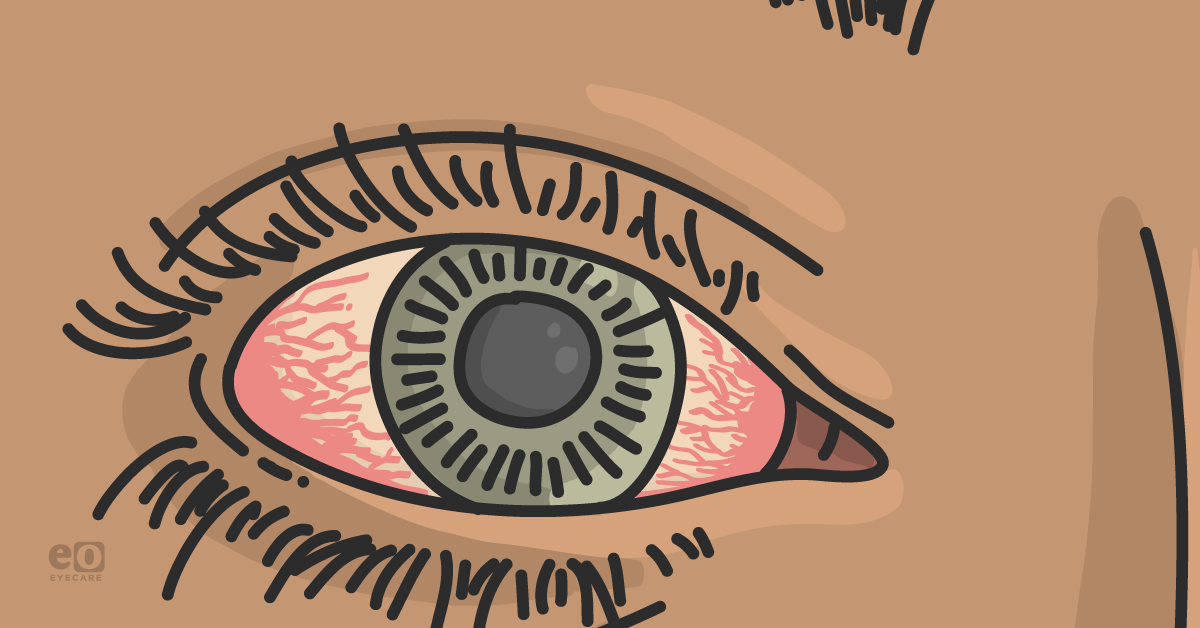In 2002, a landmark clinical trial called the Ocular Hypertension Treatment Study (OHTS) was published. The purpose of the OHTS study was twofold:
- Determine whether early treatment with topical ocular hypotensive medication can prevent the development of primary open-angle glaucoma (POAG) in people with elevated intraocular pressure (IOP).
- Identify which patients are more likely to develop glaucoma and, as a result, may benefit from treatment. Likewise, determining which patients with elevated IOP are unlikely to develop glaucoma and, as a result, could be monitored without therapy.
OHTS: A review
For the original OHTS study, investigators recruited 1636 patients with ocular hypertension at 22 clinical centers around the United States. Recruited patients had an IOP between 21 mmHg and 32 mmHg in both eyes with an otherwise normal posterior segment exam and visual fields. Participants were then randomly assigned either to receive hypotensive eyedrop medication or no treatment.
The threshold for reducing IOP was set at a level of at least 20% and patients needed to reach an IOP of ≤ 24 mmHg. Participants were then followed up with biannually for a full ophthalmic examination including posterior segment exam and perimetric visual field testing. Participants were followed to assess the development of reproducible visual field defects or a reproducible deterioration in the appearance of the optic disc indicating glaucomatous damage.
Initial five-year follow-up results of OHTS proved that topical medication was effective at reducing the incidence of glaucoma.
The cumulative probability of developing POAG was significantly different with 4.4% in the medication group and 9.5% in the observation group going on to develop glaucoma. Moreover, the mean reduction in IOP in the medication group was 22.5% versus 4% in the observation group.
The second outcome of the OHTS study—to determine
risk factors for developing glaucoma—revealed predictive factors such as increasing age, increasing IOP, thinner central corneal thickness, increased cup-to-disc ratio, and higher visual field pattern standard deviation. These predictive factors demonstrated that some ocular hypertensive patients were at very low risk of developing glaucoma, (5-year incidence at approximately 1% to 2%) whereas others were at a much higher risk of POAG (5-year incidence 25% to 35%).
OHTS2: A new standard of care
Whereas the OHTS study identified a new standard of care in treating certain patients with elevated IOP, the follow-up OHTS2 study (conducted from 2002 to 2009) involved both original groups receiving medication to control their IOP. Participants in OHTS2 who had previously been randomized to treatment for an average of 7.5 years stayed on treatment for an additional 5.5 years. The OHTS observation group was then also started on treatment for 5.5 years in OHTS2. An early treatment group and a delayed treatment group were formed because of this methodology construct.
From randomization to 13 years of follow-up, the cumulative proportion of participants who developed POAG was 22% in the original observation group and 16% in the original medication group.
The observation group took 6.0 years to develop POAG, while the treatment group took 8.7 years. These findings show that medical therapy has a reasonably quick start of protective effect. Additionally, subgroup analysis also showed that 28% of African Americans in both groups developed glaucoma and this was higher when compared to non-African Americans (16%).
OHTS3: 20 years on
The OHTS project was funded for a 20-year follow-up of the original study participants. In phase 3 of OHTS, conducted from 2015 to 2020, all living patients were re-examined from the original OHTS cohort. The ultimate objective of ascertaining effects of treating elevated IOP and early POAG as well as long-term vision loss and quality of life continue in OHTS3. Specifically, OHTS3 was conducted to determine the 20-year incidence of POAG and construct 20-year models for stratifying POAG risk. To elucidate the causal association between POAG and disability, the frequency and severity of self-reported impairments due to POAG were compared to clinical findings.
In OHTS3, the participants' treatment was no longer dependent on the groups to which they had been assigned at the outset with 72.0% of participants using ocular hypertension medication after 20 years of follow-up, or within 2 years of death.
After adjusting for exposure duration, the researchers found that the 20-year cumulative incidence of bilateral disease in both eyes was 45.6% in all individuals: 49.3% in the observation group and 41.9% in the treatment group in OHTS1.
POAG was shown to be substantially more common among Black individuals than in other races.
The OHTS3 study also found that the incidence of POAG was 31.7% in participants stratified as low risk in the baseline model, 47.6% at medium risk, and 59.8% at high risk. As a result, the study backs up the model devised by OHTS researchers to categorize patients into risk groups and encourages close monitoring and consideration for treatment in high-risk patients.
Conclusions
Overall, the findings of the OHTS clinical trials show that topical ocular hypotensive medication can delay or prevent the onset of POAG in patients with elevated IOP and certain risk factors. The OHTS supports topical treatment for those with ocular hypertension who are at a moderate to high risk of developing glaucoma, but not for people who are at low risk of developing glaucoma. The risk can be determined by taking into consideration the patient’s age, IOP, corneal thickness, cup-to-disc ratio, and higher pattern standard deviation. There was little evidence of increased systemic or ocular risk associated with ocular hypotensive medication.
